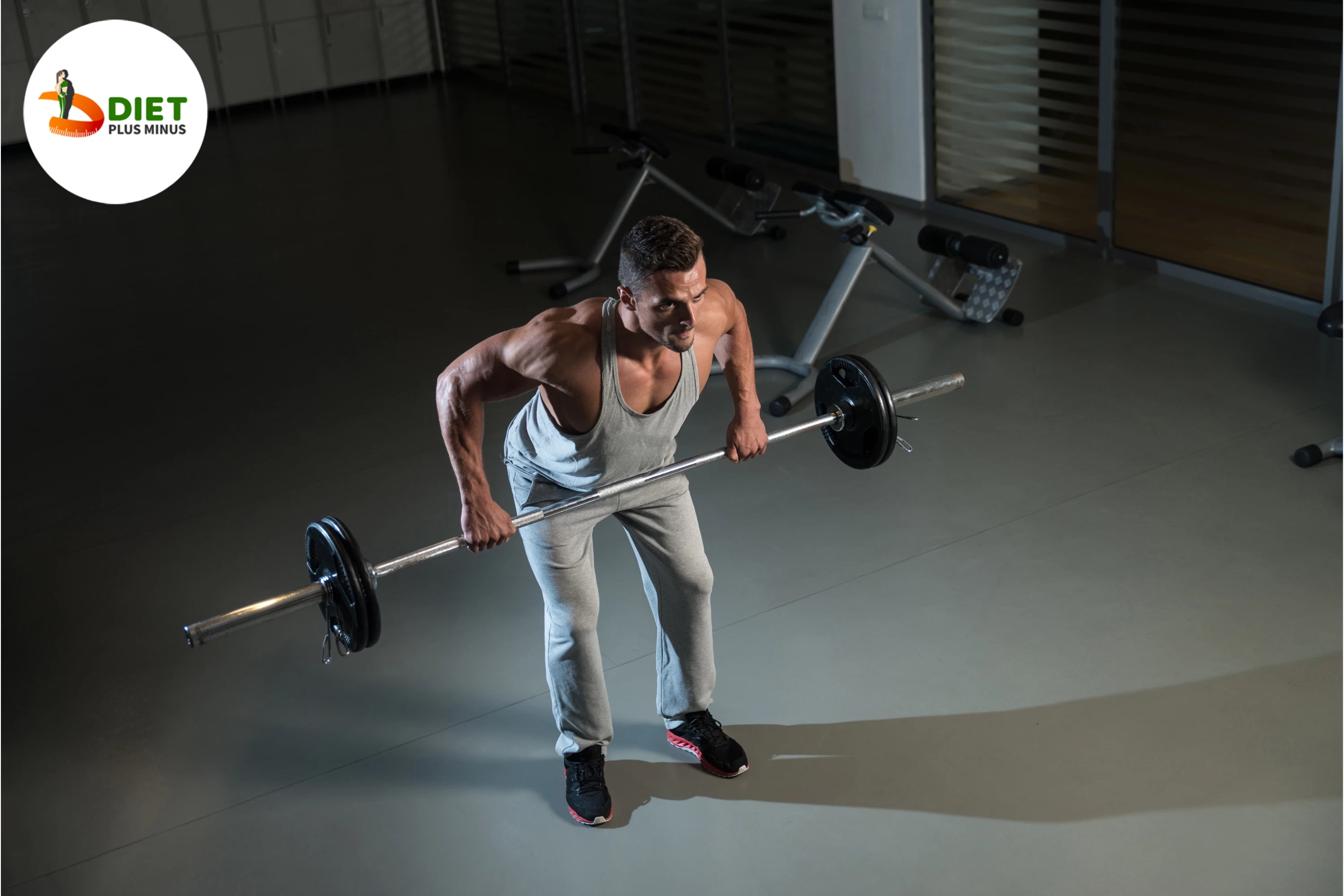Lats: Bent Over Barbell Row

What are Lats?
Back muscles called lats are large. Lats control shoulder adduction, spine extension, and lateral flexion. They also keep shoulders back and down. They can significantly improve posture when trained and strengthened.
The bent-over barbell row targets lats. It involves holding a barbell with both hands and bending at the hips to parallel. Contracting your lats, you lift the weight to your chest. Lower it slowly and repeat for desired repetitions. To avoid injury and maximise muscle training results, perform this exercise properly.
This exercise strengthens lats, improving posture and performance in daily activities, sports, and manual labour jobs that require lifting and moving heavy objects. Strengthening these muscles may also support your spine, reducing pain from chronic conditions like scoliosis and osteoporosis.
Muscles Worked: Primary, Secondary
The bent-over barbell row targets the lats on either side of the spine. As you bend and lift with your back, the latissimus dorsi muscle pulls the weight towards you. This exercise strengthens biceps, forearms, and mid-back muscles. Stabilizing your spine during movement strengthens your core and improves posture.
This exercise uses your traps, deltoids (shoulders), rhomboids (mid-back), and erector spinae (lower back). They stabilise your torso while lifting. They balance you during this exercise to prevent injury. When done properly, these secondary muscles improve muscular balance and posture.
Form Tips: Maximum Gain
Proper form for the bent-over barbell row maximises its benefits. Start with a light weight so you can keep your back straight and control each repetition.
Start with feet hip-width apart and knees slightly bent. Hinge forward at the hips until your torso is about 45 degrees from the ground, keeping your back flat. Hold the barbell with an overhand grip, hands slightly wider than shoulder width apart. Pull your shoulders back and down to stabilise your spine. Slowly pull the bar up to chest level while squeezing your shoulder blades, then slowly lower it to complete one repetition. Focus on full range of motion without rounding or arching your back. Avoid momentum when pulling up the bar to avoid injury. Instead, use muscle power for each rep.
Bent over rows properly build upper and lower body muscles and engage stabiliser muscles to maintain form, maximising gain!
Variations: Dumbbell, Single Arm
Bent-over dumbbell rows are a popular barbell row variation. Dumbbells replace barbells. One hand on each weight adds stability to this back and shoulder exercise. Starting with your feet slightly wider than shoulder-width apart, bend at the hips until your torso is almost parallel to the floor. Row a dumbbell to your chest with one arm, squeezing your shoulder blades. Keep your back straight and lower slowly before switching sides.
Single-arm bent over rows are another great variation for targeting specific sides of the body or one arm at a time. This single-dumbbell exercise starts with feet shoulder-width apart and body bent over nearly parallel to ground. Pull up one weight to chest level and slowly lower it before switching arms. Single-arm movements improve balance between sides of the body and performance due to increased stabilisation demands!
Benefits: Strength, Posture
The bent-over barbell row boosts strength and posture. Latissimus dorsi (lats) back muscles extend and rotate shoulders. This exercise engages the lats by keeping your back straight, bending at the hips, and lowering your upper body parallel to the ground. This engages all your lats and lets you lift more weight than chest flyes or cable rows. This exercise improves posture and lat strength. Strong lats keep your torso upright, which aligns your neck and shoulders. Improved posture can reduce pain from slouching and hunching due to weak muscles. Since you're not expending energy to maintain an uncomfortable stance, better posture can boost energy throughout the day.
Challenges: Stabilizing Core
The bent-over barbell row requires core stabilisation for many lifters. This exercise requires stability and posture from our core muscles. Keep the lower back flat and use the abs to stabilise the spine throughout each rep. Always brace your abs and squeeze your glutes to keep your hips from shifting, which can round or arch your lower back. Breathe deeply during each rep to avoid increasing intra-abdominal pressure and rounding out. Finally, check form with a mirror or spotter. If you or someone else rounds their lower back while rowing, reset form before continuing reps. Stabilizing your core during bent-over barbell rows will become second nature, maximising compound movement gains.
Conclusion
The bent-over barbell row strengthens lats. Start by standing with your feet shoulder-width apart and a barbell on the floor in front of you. Bend at the hips and knees to grab the barbell with both hands. Lift the bar slowly to waist level, hold briefly, and slowly lower it to starting position. Try three sets of 10-15 reps with your core engaged.
Try wide, close, or reverse grips for bent over rows to challenge yourself (palms facing away). Each type will strengthen different lat muscle groups. You can also do higher reps with low weight for muscular endurance or lower reps with heavier weight for strength gains. Switch between these variations to target all areas and avoid workout plateaus.
In Short:
Steps involved:
-
Grip the barbell pronated or supinated with a shoulder width grip.
-
Bend forward at your hips while maintaining a straight back.
-
Pull the weight toward your upper abdomen.
-
Lower the weight in a controlled manner and repeat.
Do’s:
-
Always keep your chest up during the movement.
-
Always involve your core while performing the reps.
-
Provide yourself enough bend during the movement.
-
Do it in a controlled manner keeping your back straight and still.
Don’ts:
-
Don’t keep your legs straight during the lift.
-
Do not keep too much tension in your spine and neck.
-
Do not involve your scapula to lift the barbell.
